September is HONEY MONTH and a good excuse to learn a few ideas to entertain about this BEE-autiful, BEE-guiling, un-BEE-lievably scrumptious golden nectar known as HONEY. The whole process from BEEginning in the spring until harvesting in the fall is delightful and fascinating!
Dave Zack, (one of Maddie’s favorite PEEPS and known for his spectacular apple orchard and Annual Apple Smash), takes us through the process of harvesting honey, after tending to his hives all summer. (If you haven’t yet had the chance, be sure to read Dave’s BUZZ ON BEEKEEPING).

Honey, Honey!
by Dave Zack
Bees Make Honey
Bees make honey. Everyone knows that. What you may not know is what happens to get that treasure away from the rightful owners and into the sticky hands of the beekeeper who harvests that liquid gold.
It’s a tale as old as the pyramids, maybe older. Bees make a hive; man comes along and steals the honey. Until some brilliant Englishman named Langstroth came along in the 1850’s, this usually meant disaster of the worst kind for the bees. Langstroth invented the “modern” beehive that allows beekeepers to harvest excess honey over what is needed by the bees to feed themselves over the winter. It’s a symbiotic relationship that allows commercial beekeepers to produce huge volumes of honey each and every year and backyard hobbyists, like us, to keep a hive or two going.
I’m making this sound like the honeybee is a willing participant in this exchange. She’s not (all honey bees are female). Honeybees are driven to, first, find a suitable home. Check. We’ve given our colony a spiffy, clean Langstroth brood chamber with ten frames so our queen can lay eggs to her heart’s desire.
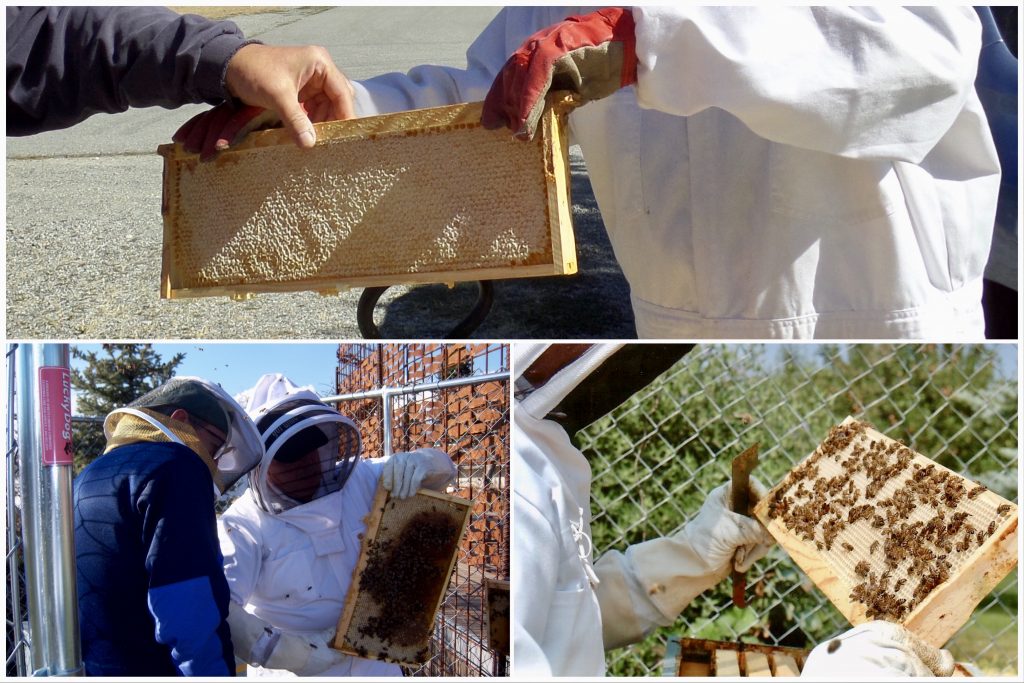
Honey is Heavy
Next, they’ll build out honeycomb and begin collecting nectar, turning it into honey and putting little wax caps over the honey cells to preserve it for their winter food stores. Check. We place a second “deep” (another box with ten more frames in it) directly over the first and our girls immediately start to fill all those cells in all ten frames with new, capped honey.
We need to be pretty vigilant from here on out. When the second deep is nearly full, we place a “honey super” directly over the second deep to keep the girls happy. If the hive runs out of room for honeycomb, the bees will swarm and we’re left with half a hive to carry on plus we’ve just lost our original queen and 30,000 of her subjects.
A honey super is just as long and wide as the brood chamber and second deep but shorter. Why you ask? Because honey is really heavy. Water weighs eight pounds a gallon. Honey weighs twelve. A second deep full of honey could weigh more than 80 pounds while a full honey super comes in at around 40 pounds or so. Still hefty, but manageable.
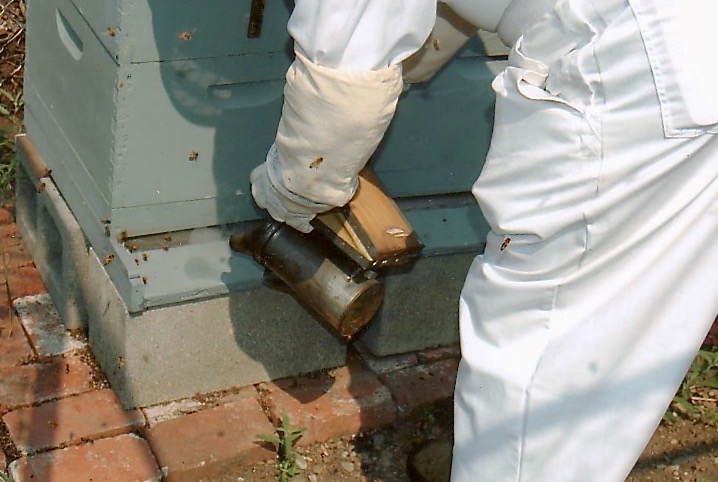
Blowing Smoke
Now what? We check progress fairly regularly now to keep a bit ahead of the girls. When they’re close to finishing a honey super, we add another one. And another one. And another one. This year, we harvested four honey supers giving us over 100 pounds of extra white honey. Yum.
Did I mention the girls are not willing participants in this exchange? Our bees are normally passive to a fault. They are busy. Unless you step on one or stand right in front of the hive (they aren’t the most graceful of flyers) or plan on taking something away from their hive, they’re gentle and mostly forgiving. Come harvest time though, watch out.
“Oh geez, here come the giants in the hazmat suits and they’ve got smoke coming out of one of their hands, this could be bad.”
I can only imagine what’s going through their heads when we show up to harvest. Off comes the hive top and inner lid exposing the top of the first honey super. We blow smoke into the hive entrance as well as the top of the now open hive. It seems to calm them because they think there’s a fire and their survival instinct kicks in as they begin to gorge themselves with honey in case a quick exit is needed.
We don’t give them a chance to eat much though as we pry out each frame, brush the bees away, and transfer the now clean but full frame of capped honey into a holding empty honey super box. Repeat nine more times and you’ve got a full honey super ready for processing! Did I mention we had four honey supers this year from one hive? I did? Well, we’re pretty proud of the girls.
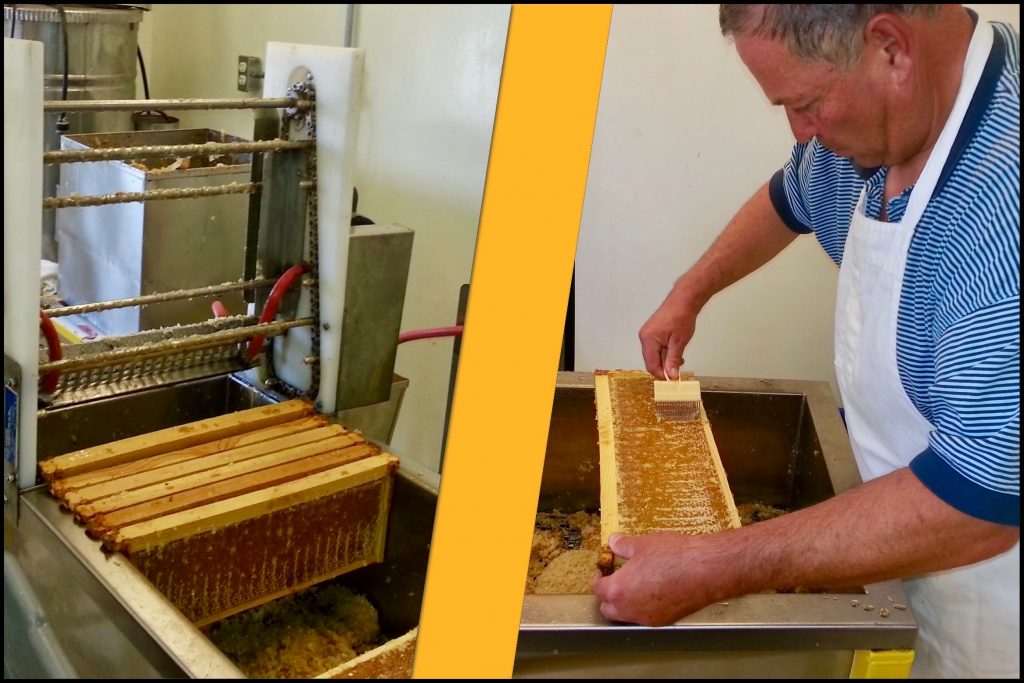
All That Honeycomb
The next step is processing all that honeycomb. You could do it yourself. Many do. Once.
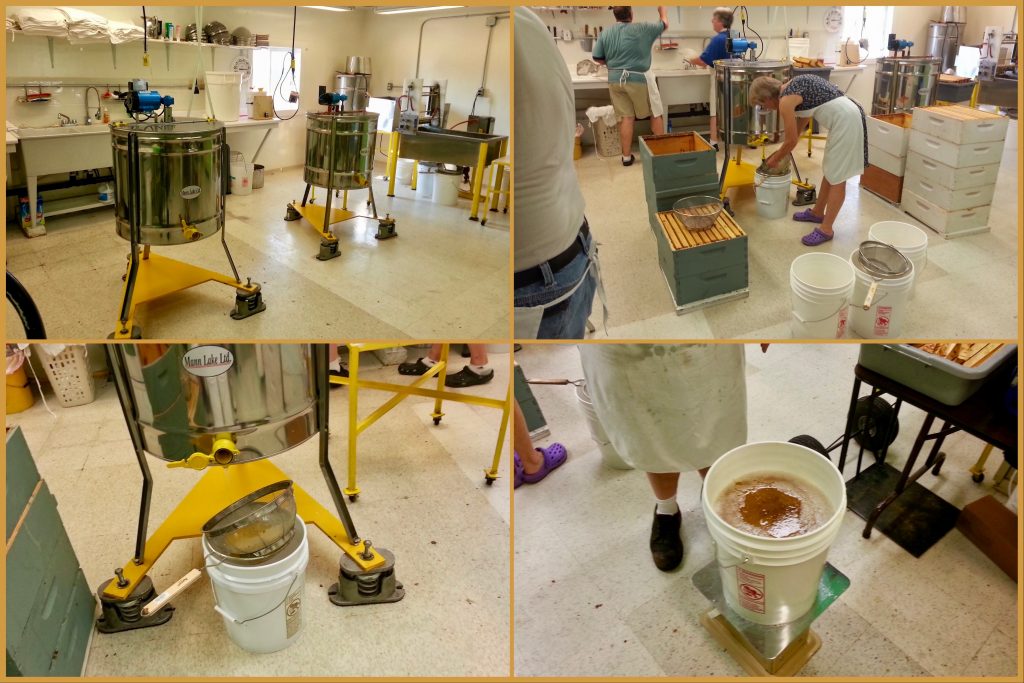
The Process of Processing
Extracting honey is really, really messy. We were lucky enough to find a local extraction facility run by a bee crazed fanatic. Honestly, Jim is a master beekeeper that has built a terrific facility for extracting honey that would do a retired mechanical engineer proud, which is just what he is.
We load up our precious cargo and drive it out to Jim’s where it is loaded into a “hot” room for about 45 minutes to get everything warm and runny. From the hot room to the decapper, where each frame has its caps removed to allow access to all the now warmed runny honey. Next, the frames are put into a centrifugal spinner and the extraction really begins to show gold. All that honey is spun out of the frames and into a honey bucket at the lower end of the spinner. The honey is strained by two filters on its way into the bucket to remove any unwanted wax or stray bee parts but that’s it for the processing. Nothing is added. Nothing is taken away. What you have now is pure, raw honey of the best kind.
It’s almost a shame to call this processed honey since its just as the bees gave it to us but that’s government for you. We label our treasure “Pure, raw honey”. We also add the grade (color – this year extra white) and water content (this year 16%) and we’re done. Here you go, have some magic from our backyard courtesy of Queenie and 60,000 lady field hands.
A Final Word On Honey
A final word on honey. It’s got so much great stuff in it that its one of the only foods on the planet that man can’t reproduce. Microwaving it kills all that great stuff. Please don’t do it. Crystalized honey can be heated up slowly (no more than 140 degrees) to reconstitute. They work so hard to make it. Just slow down a bit and enjoy what a sweet world this really is.
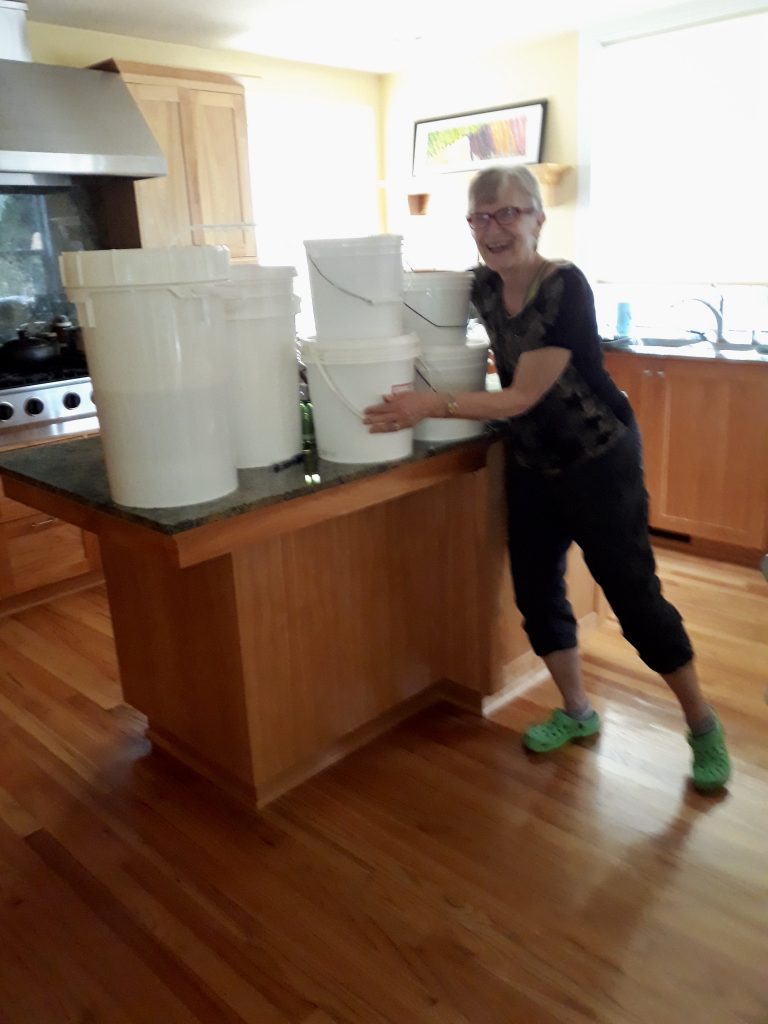
Honey Ginger Chicken
Ingredients
Marinade
- ⅔ cup raw honey
- 2 tbsp minced peeled fresh ginger
- 2 tbsp freshly squeezed lemon juice
- 2 tbsp cider vinegar
- 2 tbsp soy sauce
- 2 tsp dark sesame oil
- 1 tsp orange zest freshly grated
- 1 tsp Worcestershire sauce
- 4 cloves garlic minced
Chicken
- 1 lbs boneless skinless chicken breast or tenders cut into bite-sized pieces
- Cooking spray
- 1 tsp kosher salt
- ¼ tsp freshly ground black pepper
- 2 tsp cornstarch
- 2 tsp water
- 2 tsp sesamed seeds optional
Instructions
- In a large zip-lock bag, combine all the ingredients for the marinade and mix well. Add the chicken and seal. Massage the marinade into the chicken and then refrigerate for at least 4 hours or overnight, turning occasionally.Preheat oven to 425°F. Remove chicken from bag, reserving marinade. Arrange chicken in a single layer on the rack of a broiler pan, coated with cooking spray.Sprinkle chicken with salt and pepper. Bake for 15-20 minutes, (170° F internal temperature), stirring once.
- While chicken is cooking, strain marinade through a sieve into a bowl; discard solids. Place marinade in a saucepan and bring to a boil. Cook 3 minutes, skimming solids from surface. Whisk together cornstarch and water in a small bowl and add to pan, stirring constantly until glaze thickens, (about 1 minute). Remove from heat and pour glaze into a large bowl.
- Preheat broilerAdd chicken to glaze and toss to coat. Put glazed chicken onto a pan and place under the broiler until browned, being careful not to burn or dry the chicken out. Sprinkle with sesame seeds and serve.

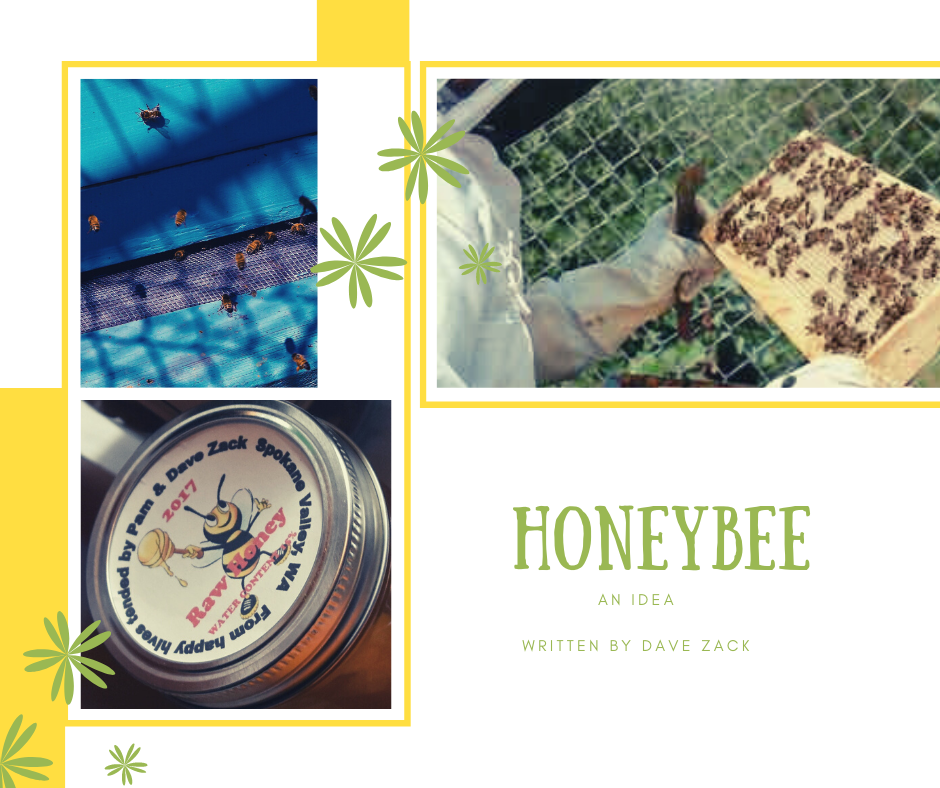




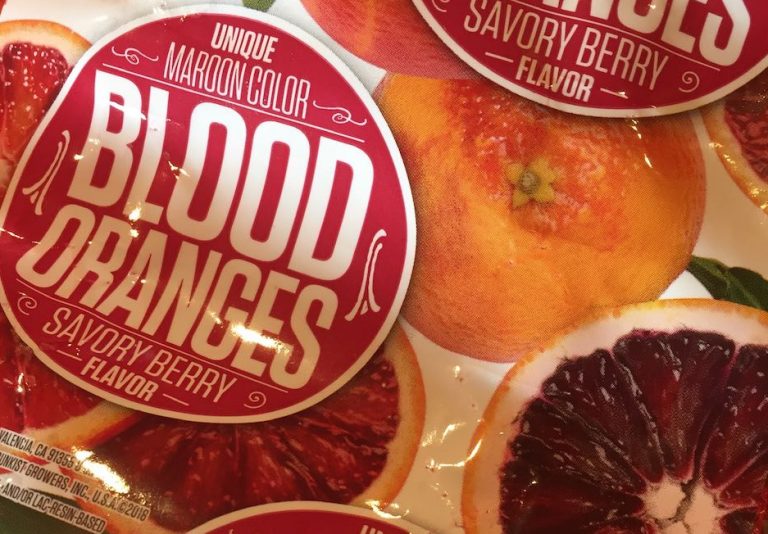

Pingback: EARTHING & BEEING an idea - Entertaining An Idea
Pingback: BEEing GREEN - Entertaining An Idea